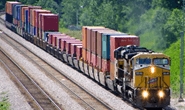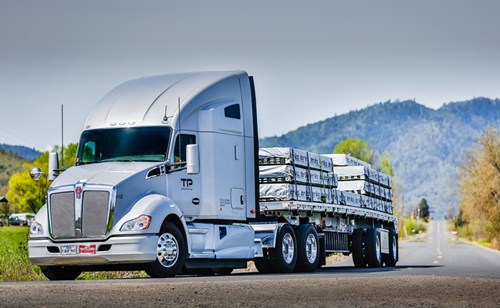Shipping and Logistics

Panel Focuses on Challenges Facing Trucking and Rail
Written by Sandy Williams
August 27, 2019
The trucking and railroad industry shared a stage on Monday at the SMU Steel Summit. James Burg, president of James Burg Trucking Company, and Jim Schaaf, group vice president of metals and construction at Norfolk Southern, talked about the challenges facing their industries.
Trucking Tribulations
The trucking industry employs approximately 7.3 million people, 3.9 million of whom are drivers. Trucks carry 70 percent of all freight, and even if rail doubled its capacity, the trucking rate would only drop by one percent, said Burg, describing the enormous scale of U.S. trucking.
Finding drivers to fill seats in an aging workforce is a challenge. Not only is it difficult to find recruits who can pass drug tests and have the necessary operator training, the industry is competing with the construction sector that offers better hours and higher wages, Burg said.
The second biggest challenge is finding safe and available parking. With new ELD regulations that restrict driver hours on the road and dictate how often breaks must be taken, finding areas that can safely accommodate trucks and offer the necessary amenities for drivers can be problematic. Truck parking supply is limited and facilities are costly to build and operate, he said,
Other challenges faced by trucking include:
- traffic congestion that costs that the industry lost time and revenue from drivers sitting in traffic
- neglected roads and bridge repair
- a shortage of mechanics to repair modern, technologically advanced equipment
- liability insurance
- drive technology (still 20-25 years before totally autonomous trucks)
- EPA regulations on emissions
Burg praised the current administration for its commonsense approach to rules and regulations, saying current regulators have been the easiest to work with in his career.
Railroads and steel
Norfolk Southern Railroad is the premier steel handling franchise with routes south to New Orleans, north to Chicago and to the East Coast. Within its service area are 11 integrated steel mills, 36 minimills, and 50-plus rolling mills and steel processors. There are 25,600 rail cars in its metals fleet, costing an average of $125,000 each, depending on steel pricing, Schaaf said,.
Section 232 was expected to be a boon for the rail industry, but that didn’t happen, said Schaaf. Instead the industry had an initial uptick in volume followed by a decrease in equipment utilization and extreme supply chain variability. “We are never sure where our volumes are coming from on a regular basis due to 232,” he said. Volumes have been falling since second-quarter 2018 and the industry has seen degradation in the supply chain.
As an example, Schaaf described a customer that imports about 2 million tons of product annually. After Norfolk Southern spent years developing a highly efficient supply chain, it was suddenly disrupted by the tariffs that impacted multiple suppliers, increased transit times, mixed equipment fleets and required quota-driven weekly forecast changes. Costs and inefficiencies added up, requiring 30 percent more equipment to adapt to the changes. In general, 2018 was a difficult year with crew shortages, congestion, locomotive shortages, equipment deficiencies and service inconsistency, he said.
The company took a turn for the better in 2019 as the railroad implemented new strategies that focused on what the customer needs rather than on what the railroad needs. As a result of improved communication and better forecasting, the rail line became more efficient managing crews and equipment and turning inventory as quickly as possible. Norfolk now has more than 2,000 cars in storage and is running more efficiently, “doing more with less,” Schaaf said.
Autonomous Trucks and Rail
As an industry, Schaaff doesn’t foresee any near-term interest in autonomous locomotives. Currently trains have two-man crews, which might someday be reduced to one person with the aid of new technology and cooperation from labor.
Burg predicts that level five completely autonomous trucks are decades away due to the difficulty of visually mapping four million miles of road. Poorly maintained highways and bridges could easily derail the technology that keeps autonomous vehicles on the road. Issues also remain regarding how trucks are identified and handled at their destination and returned into service.

Sandy Williams
Read more from Sandy WilliamsLatest in Shipping and Logistics

Trump signs executive order aimed at making US shipbuilding ‘great again’
President Trump on Wednesday signed an executive order meant to breathe new life into American shipbuilding and curb Chinese dominance in the sector.

Great Lakes iron ore trade fell again in March
Recall that shipments also saw a sharp decline in January.

Longshoremen ratify contract with maritime alliance
Nearly 99% of ILA members voted in favor of a new labor deal with the United States Maritime Alliance that covers workers at ports on the Atlantic and Gulf coasts.

Reibus: Flatbed rates up slightly but uncertainty ahead
With construction seasonally soft, the flatbed market remains softer than the other main trailer types.

US-flagged ore shipments on Great Lakes down in 2024
The Lake Carriers’ Association reported a 4.5% y/y decline in December’s ore shipments of 4.6 million short tons.
